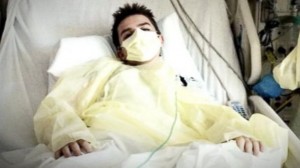Tag Archives for " incident management software "
Survey Says… C-suite leaders credit improved care as best way to cut costs
Executives say adapting existing cost structures is the biggest challenge.
A survey of nearly 80 healthcare executives from Huron Healthcare revealed that executives feel “…improving clinical operations and care delivery offers the biggest opportunity for cost reductions,”
“These survey findings are consistent with what we are seeing and hearing from clients across the country,” said Gordon Mountford, executive vice president of Huron Healthcare.
Tempering their optimism about value-based care however, are the concerns they have about implementing it. Nearly 55% of those polled said their organization’s primary challenge in the transition to value-based care will be adapting their cost structures to generate revenue and control costs.
You can read more details, and download the full report here
Evidence-based protocols drive quality improvement
An article published in FierceHelathcare’s eBook “Systemwide Transformations that Improve Healthcare Quality and Efficiency.” argues the best way to treat patients is with evidence-based protocols (EBPs).
Here is an excerpt:
In a new and evolving healthcare market that rewards efficiency and quality care, hospitals must find a way to streamline their systems to put forth better results for patients and more savings for their organizations.
One way to accomplish this is by focusing on evidence-based care protocols–the clinical care recommendations supported by the best available evidence in the clinical literature.
Although there may be 200 ways to do something, in some cases clinicians have strong evidence that reveals the best way to do it, says David J. Ballard, M.D., Ph.D., chief quality officer for Baylor Scott & White Health, a not-for-profit healthcare system based in Dallas that includes 46 hospitals and more than 500 patient care sites. For instance, Baylor implemented a standardized heart failure order set, which has the potential, if it were deployed across the country, to save $2 billion in annual hospital costs and prevent 1,500 in-hospital deaths annually.
The results of EBPs are better care for patients, and cost savings for healthcare organizations.
You can read more about Evidence-Based Practices here.

5 ways to reduce hospital-acquired infections
Hospital-acquired infections are a serious issue. Resulting in loss of lives and increased hospital costs, both of which are preventable. These 5 tips may help.
Although the rates of infection have steadily decreased over the past few years, still approximately 75,000 deaths were attributed to hospital-acquired infections in 2011, according to the Centers for Disease Control and Prevention.
There are measures that can be taken to lower infection rates which are surprisingly easy.
Red blood cell (RBC) transfusion strategies are a common treatment in the U.S. But, infection rates dropped by 20 percent when hospitals performed them less often.
It is the simplest one on the list, and a shock that it even needs to be on here. Yet, a large enough portion of healthcare workers resist the practice that it bears constant reminding.
This is a shameless plug because it works. Other industries have adopted information technologies to dramatically improve their quality, Healthcare is no different.
A study at Case Western Reserve University School of Medicine found that a dedicated and educated housekeeping team reduced room infection by 89% of baseline.
- Consider using copper surfaces
A study published in the May 2013 issue of Infection Control and Epidemiology found that copper surfaces reduced the amount of health care-acquired infections by more than half.
Did you know that October 15, is Global Handwashing Day?
I didn’t until I wrote this article. Find out more information by visiting the globalhandwashing.org website.

NJ court says hospitals can keep internal error reviews private
A recent New Jersey Supreme Court ruling has concluded that hospitals’ internal review reports written after adverse events occur should remain private. But, that doesn’t mean hospitals should not be tracking and reporting adverse events.
Under the ruling, the Valley Hospital of Ridgewood, New Jersey is allowed to keep secret a memo that was written after a roundtable discussion, following events that led to a 2007 malpractice suit alleging a newborn suffered brain damage as a result of negligent care during birth.
In the 4-3 majority ruling, the court said, “[t]he Legislature included in the Patient Safety Act a provision creating an absolute privilege. It reasoned that healthcare professionals and other facility staff are more likely to effectively assess adverse events in a confidential setting, in which an employee need not fear recrimination for disclosing his or her own medical error, or that of a colleague.”
The 2004 Patient safety Act, the Supreme Court was referring to, ensures the confidentiality of healthcare workers in order for them to be more forthcoming when a hospital error is made. Without this provision, hospital staff are less likely to report an adverse event for fear of being held liable. Doctors and nurses should feel they are protected, without the threat of reprisal, to share all information surrounding a bad outcome — allowing for timely and accurate incident reporting.
Timely and accurate incident reporting is essential to improving patient care by identifying adverse event trends due to bad practices, poor planning, or insufficient training. A study from the Journal of Patient Safety calculated the annual toll of preventable deaths due to medical errors in hospitals at as many as 440,000. The finding did not include tens of thousands more who die outside of hospitals from medical mistakes such as drug or diagnostic errors.
It can easily be argued that, in a hospital environment conducive to efficient incident reporting — where all staff feel secure to participate in a culture of quality — and with a robust, integrated Risk, Quality and Performance Improvement program, a large number of those 1,000 deaths per day are preventable.
Temporary Paralysis and Other Things You Need to Know About Enterovirus
————————————————————————————————————————–
There is still a mystery surrounding Enterovirus cases spreading around the country. Now the CDC is investigating possible connections between the virus and temporary paralysis. Although its symptoms are similar to the common cold, its rapid progression and severity makes it very different — with many cases ending up in Intensive Care. Hundreds are hospitalized in 11 states, at higher risk are children with asthma.
Here are some important things you should know:
• Highly contagious, spreadable by cough or sneeze, and also can live on surfaces. But full knowledge of how is spreads is unknown due to lack of scientific studies on the virus.
• Starts like common cold; Runny Nose, Coughing, sneezing and fever
• Progresses rapidly; difficulty breathing, possible loss of consciousness (look for wheezing, shortness of breath or difficulty speaking)
Apparently this isn’t the first case of an outbreak of Enterovirus (EV-D68). According to a 2011 CDC report, from 2008 to 2010 there were clusters of Acute Respiratory Illness associated with EV-D68 across multiple continents including Asia, Europe and the United States. While it’s not the first time however, health officials are scratching their heads as to why it has reemerged… and with such voracity.
Particularly alarming is the lack of specific treatment for the virus and its, now possible, connection to acute onset of focal limb weakness — or temporary paralysis. Instead, health officials are tasked with treating the symptoms of the infection, often requiring hospitalization.
For the most current information on the virus, and to find out what is being done about it, visit the CDC website.
The CDC has a specific link for Healthcare Professionals on Evaluating, Reporting, Testing and Infection Control Recommendations here.

